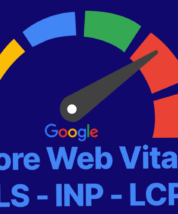Overview
It’s not enough just to attract organic traffic: you must ensure a high‑quality customer experience to turn every visit into a sales opportunity. This article reveals the most effective UX‑SEO strategies to increase your conversion rate and establish your site as a digital‑marketing leader.
Why Combine User Experience and SEO?
SEO and UX used to be seen as separate disciplines, but today they are deeply intertwined.
Google has updated its ranking criteria to favor sites offering smooth, fast, and enjoyable navigation.
Companies investing in UX optimization not only improve visibility, but also build customer loyalty and boost conversions.
By combining SEO and UX, you gain many benefits:
- Enhanced visibility through improved search positioning and higher‑quality traffic.
- Improved customer experience, leading to more purchases and repeat business.
- Greater customer satisfaction, stronger trust, and enhanced brand image.
- Positive synergy, where every UX improvement also benefits SEO.
Where Do UX and SEO Meet?
Here are the key intersection points where UX and SEO converge:
Site Architecture
Having a clean, well‑structured site architecture is essential for a successful SEO strategy built around user experience.
A clear, logical structure forms the solid foundation of any SEO initiative aimed at improving user experience and boosting online visibility.
Your site’s architecture should make it easy for users to find information within three clicks and also allow search engines to effectively index all key pages.
High‑quality web architecture also includes descriptive, consistent URLs that mirror the information hierarchy and incorporate relevant keywords to enhance SEO.
Smart Internal Linking
Internal linking is a powerful lever that guides visitors through your site and distributes SEO authority to important pages.
Inconsistent linking or poor site structure can severely damage SEO—even if your content is excellent.
A well‑designed internal linking strategy not only improves discovery of key pages but also increases time on site—an important positive signal to Google.
Moreover, it enhances navigation by offering contextually relevant links to improve UX and conversion rates.
Mobile‑First & Core Web Vitals
With mobile usage skyrocketing, adopting a mobile‑first approach is essential.
Core Web Vitals—such as Largest Contentful Paint (LCP), Interaction to Next Paint (INP), and Cumulative Layout Shift (CLS)—are now key criteria that Google uses to assess a site’s technical performance.
These metrics measure loading speed, responsiveness, and visual stability—critical UX factors. Treating them as full‑fledged business KPIs from day one directly impacts visitor satisfaction and search ranking.
Optimizing Load Times
Page speed impacts both UX and SEO.
Slow sites frustrate users, increase bounce rates, and drop in search rankings.
We strongly recommend compressing images, minifying HTML/CSS/JavaScript, deferring non‑essential JS (with lazy loading), and caching resources to speed up return visits.
All these technical improvements make your site faster and smoother—keeping users engaged.
Implementing these four pillars—site architecture, internal linking, mobile‑first & Core Web Vitals, and load‑time optimization—lets you build a fast, user‑friendly, and SEO‑optimized website that boosts visibility and conversion.
7 UX & SEO Best Practices to Boost Sales
Attracting traffic isn’t enough—you need to offer an engaging experience that converts visitors into customers. Here are 7 top practices to optimize your site and increase sales:
1.Optimize Page Load Speed
Page speed is vital for both UX and SEO. A slow site drives visitors away, raises bounce rates, and damages brand image. A fast site builds confidence and drives conversions. Google rewards speed in its ranking algorithm.
To boost performance: compress images, streamline scripts, and choose solid hosting—showing customers you value their time and reinforcing credibility.
2. Create Smooth, Intuitive Navigation
To help users find information in under three clicks, focus on:
- A clear, hierarchical menu
- Visible breadcrumb navigation
- Optimized filters and sorting on category pages
- A robust internal search engine
- A fluid overall user experience
3. Polish Title Tags & Meta Descriptions
Title tags and meta descriptions matter for SEO and UX. Use keyword research based on real user language—not just industry jargon. Write clear, compelling titles including primary keywords, and meta descriptions that entice clicks.
4.Use Clear, Visible Call‑to‑Actions
CTAs guide users to the desired action. Add attractive CTAs on every page, with explicit messaging and contrasting colors to maximize conversion rates.
5. Adopt Responsive, Accessible Design
Responsive design ensures a consistent experience across devices. Accessibility expands your audience and improves satisfaction. Aim for a clean, intuitive, and inclusive design—it boosts organic traffic and brand reputation.
6. Incorporate High‑Value Content
Your content strategy should follow EEAT (Expertise, Experience, Authority, Trustworthiness). Include detailed product pages, guides, FAQs, customer reviews, and multimedia. Rich content boosts both SEO and UX by reassuring and converting visitors.
7. Implement UX Testing / A/B Testing
Optimization is a continuous process. We strongly recommend A/B testing different page versions, using heatmaps, session recordings, and adjusting based on results.
A/B testing identifies your most effective conversion levers.
Recommended Tools for UX & SEO Synergy
To build an impactful UX‑SEO strategy, we recommend:
- Google Analytics & Search Console – organic traffic and SEO monitoring
- PageSpeed Insights & Lighthouse – evaluate Core Web Vitals and tech recommendations
- Microsoft Clarity & Hotjar – behavior analysis (heatmaps, session recordings)
- SEMrush, Ahrefs & Screaming Frog – technical audits, keyword tracking, site crawling
- Optimizely & AB Tasty – A/B testing solutions for UX optimization
These tools help you continuously measure, analyze, and optimize your e‑commerce site for peak performance.
Common Mistakes to Avoid
Even well‑intentioned efforts can backfire if you make these mistakes:
- Neglecting content strategy in favor of pure technical SEO
- Over‑stuffing keywords, which harms readability and UX
- Ignoring mobile optimization and accessibility despite rising smartphone usage
- Complex navigation or overly long purchase flows, which drive users away
- Skipping data analysis and ongoing adjustments, which leaves problems unaddressed
Striking a careful balance between search‑optimization and user experience is essential for maximizing success.
Subscribe to our newsletter and gain access to strategic insights, exclusive analyses, and expert tips to enhance your online presence.
Conclusion
To succeed with an e‑commerce site, you must integrate UX and SEO. Optimizing UX‑SEO isn’t just about better rankings—it’s about creating happier, loyal, and engaged customers.
By applying these best practices, you can maximize organic traffic, improve conversion rates, and deliver a memorable customer experience.
Make the synergy between SEO and UX the driver of your digital growth—and turn every visit into a sustainable sales opportunity.








